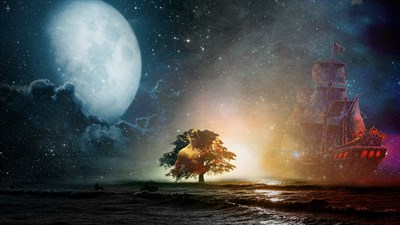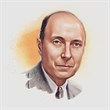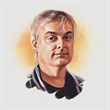The Search for the Theory of Everything
The Theory of Everything (ToE) is the holy grail of science.
 The "Theory of Everything", or "ToE" is the holy grail of physics. It's a concept that arose after the discovery of quantum mechanics in the early 20th century.
The "Theory of Everything", or "ToE" is the holy grail of physics. It's a concept that arose after the discovery of quantum mechanics in the early 20th century.
Setting the Stage - Two "Competing" Theories
We basically have two branches of physics that attempt to describe what reality is and how is works. The realm of classic physics, sometimes referred to as "Newtonian Physics" has been a core focus of science for the past five hundred years or so. Newtonian Physics does a great job of describing reality from a macro (large object) perspective. It is focused on the way things behave that are larger than the size of an atom. In the early 20th century, Albert Einstein unveiled Special Relativity, followed by General Relativity, which further refined our macro understanding of space, time, gravity and motion of objects (larger than an atom)
Quantum mechanics was unveiled around the same time as Einstein's relativity. Quantum mechanics is the study of matter and reality in the "sub atomic realm" - how does matter and energy behave when you look at things smaller than the size of an atom - in the realm of electrons and quarks. Like relativity, quantum mechanics further revolutionized our understanding of matter and energy, and has produced some mind boggling implications that have been experimentally verified, yet are still not fully understood. Max Planck, Niels Bohr, Albert Einstein, Werner Heisenberg and Erwin Schrodinger turned the science world upside down when it was revealed that at a quantum / sub-atomic level, matter is not so solid, but more of a probabilistic construct that can behave like both a wave and a particle.
The interesting thing about our young understanding of quantum physics is that it "breaks the rules" of Newtonian and Einstein Relativity physics in many cases, and behaves with a set of behaviors that is at odds with the general understanding we have built up over the past 500 years.
The Holy Grail of Physics
The "Theory of Everything" is a holy-grail concept for physics, and basically represents any attempts by scientists and physicists to "bridge the gap" between classic physics, relativity, and quantum mechanics, and find a single, unified theory that connects them together.
Quantum mechanics is still a young branch of science, and physicists around the world are making new discoveries and testing new hypothesis every year. The most interesting revelation that baffles quantum physicists is that there is this thing called "The Observer Effect", that seems to tell us that conscious observation can affect the existence of matter and energy, on a sub atomic, fundamental level.
In the Consciocentric paradigm, consciousness is a fundamental aspect of all matter, and so the common interpretations of quantum wave collapse take on an interesting character. The Copenhagen interpretation states that Schrodinger's wave probability equation accurately describes the behavior of matter, but only when its not being observed. This "observation" is a key sticking point and must be explicitly defined. With Consciocentrism, all matter qualifies for this observer effect, therefore, any "macro object" coming into contact will cause collapse of the wave function. Consiocentrism incorporates Huge Everett's many worlds interpretation of wave collapse as well, but with some specific parameters for how the many worlds / multiverse behaves, and how consciousness navigates and collapses the many worlds to create our high probability "moment of now" that we call reality.
All of this is explored in much more detail in other sections of this website. It is evident that any "Theory of Everything" will have to include consciousness in it, no matter which interpretation of quantum wave collapse you subscribe to.
In other articles, will explore in more detail the observer effect, the wave-particle duality of matter, the double slit experiment, and Heisenberg uncertainty principle, dimensional promotion, the Copenhagen interpretation and Hugh Everett Many Worlds interpretations of quantum wave collapse - which are some of the most interesting aspects of reality when looking at them from a sub atomic perspective.
 Eugene WignerPhysicist
Eugene WignerPhysicist "It is not possible to formulate the laws of quantum mechanics in a fully consistent way without reference to the consciousness."
 David ChalmersPhilosopher and Cognitive Scientist
David ChalmersPhilosopher and Cognitive Scientist "We won't have a theory of everything without a theory of consciousness."